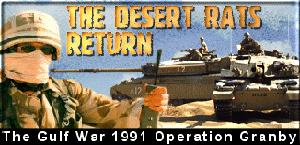The War At Sea

HMS London
When Iraq invaded Kuwait, one of the UN Security Council's first moves, was to establish a trade embargo on Iraq. One of the primary routes to Iraq, was up the Persian Gulf by ship. Royal Navy and United States Navy warships, ranging from aircraft carriers, to minesweepers, took up position in the Gulf, with orders to prevent any ships reaching Iraq for the duration of the crisis. The flow of oil from Iraq was virtually stopped. The hope was, that Iraq would run out of money, and the pressure would force Saddam to capitulate, and withdraw from Kuwait. At the same time, the Allied nations' navies and merchant fleets, were moving men and material to the Gulf States. As British and Allied ships turned Iraqi ships around at the mouth of the Gulf, an air embargo was also put in place by the UN. If a ship refused to turn around, Royal Navy Sea King and Lynx helicopters would drop Royal Marine Commandos onto the suspect ship and stop it. They would also board from inflatable power boats. On 25th February, the Iraqis fired a Silkworm missile at the USS Missouri. HMS Gloucester, spotted the missile and blew it out of the sky, with seconds to spare.
On 24th January, a Lynx from HMS Cardiff spotted three Iraqi vessels operating from the occupied Kuwaiti Island of Qaruh, and sank two of the Minesweepers. The same day, Royal Navy, and US Navy units captured the island, killing three Iraqis, and capturing 51, in the operation which liberated the first Kuwaiti territory.
On 31st January, 17 Iraqi landing craft, working their way down the coast of Kuwait at night, were discovered by Allied Forces. RAF Jaguars pinpointed the flotilla off Mina Saud, and Allied forces destroyed four of the assault craft, and damaged another twelve. Royal Navy Lynx helicopters were involved in this engagement, and the RAF Jaguars may have employed their new CRV-7 rockets during the engagement.



